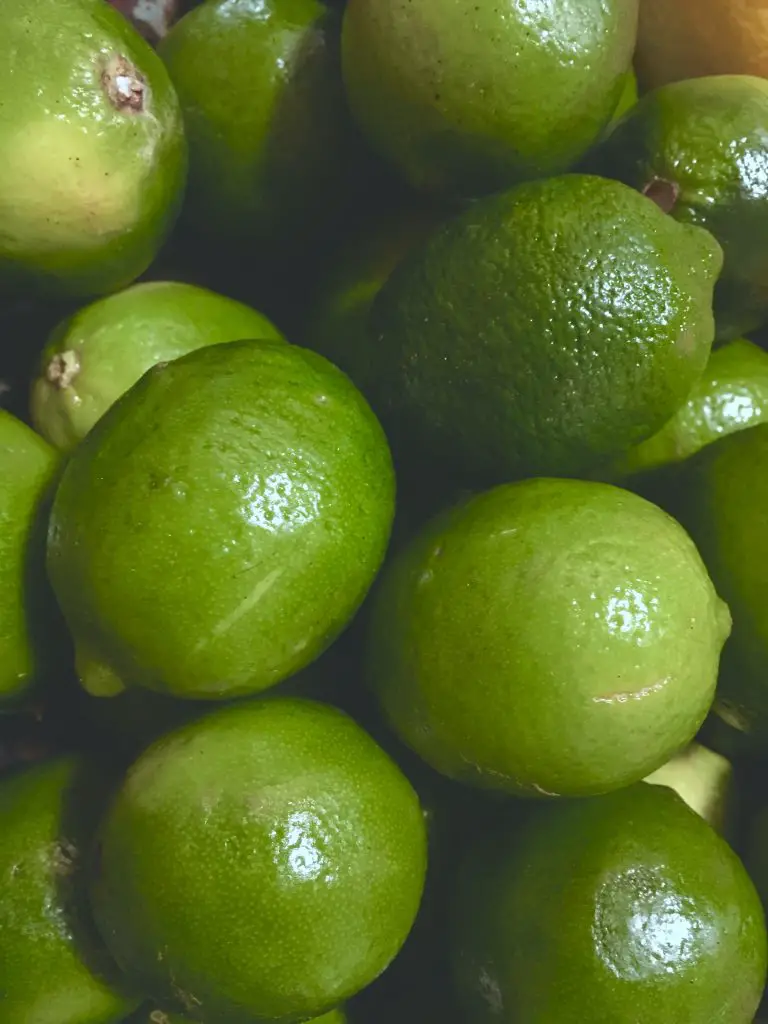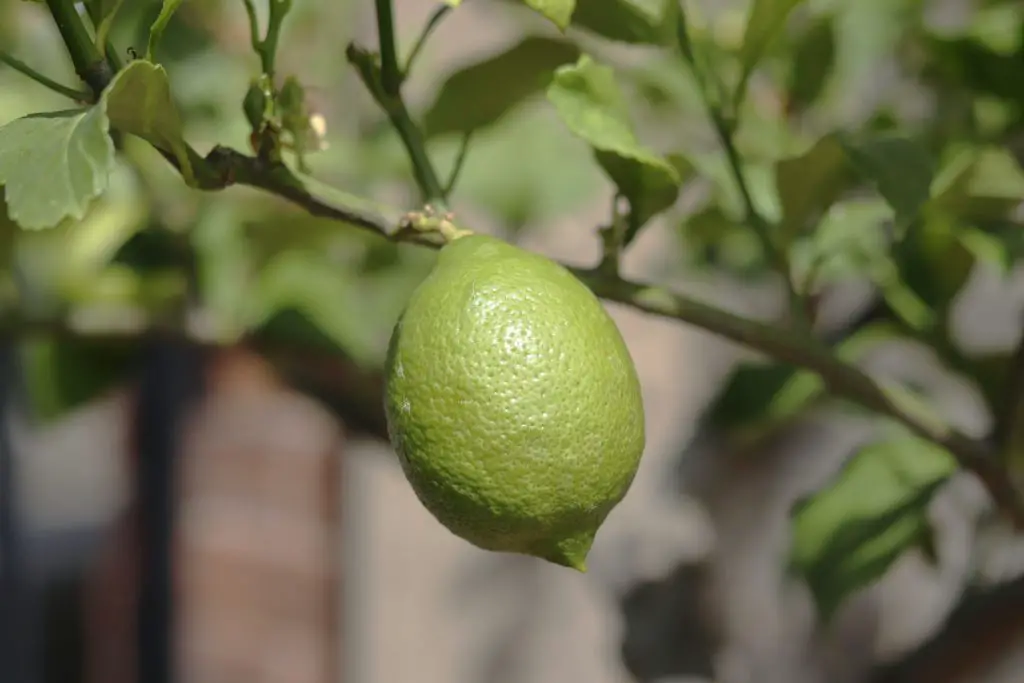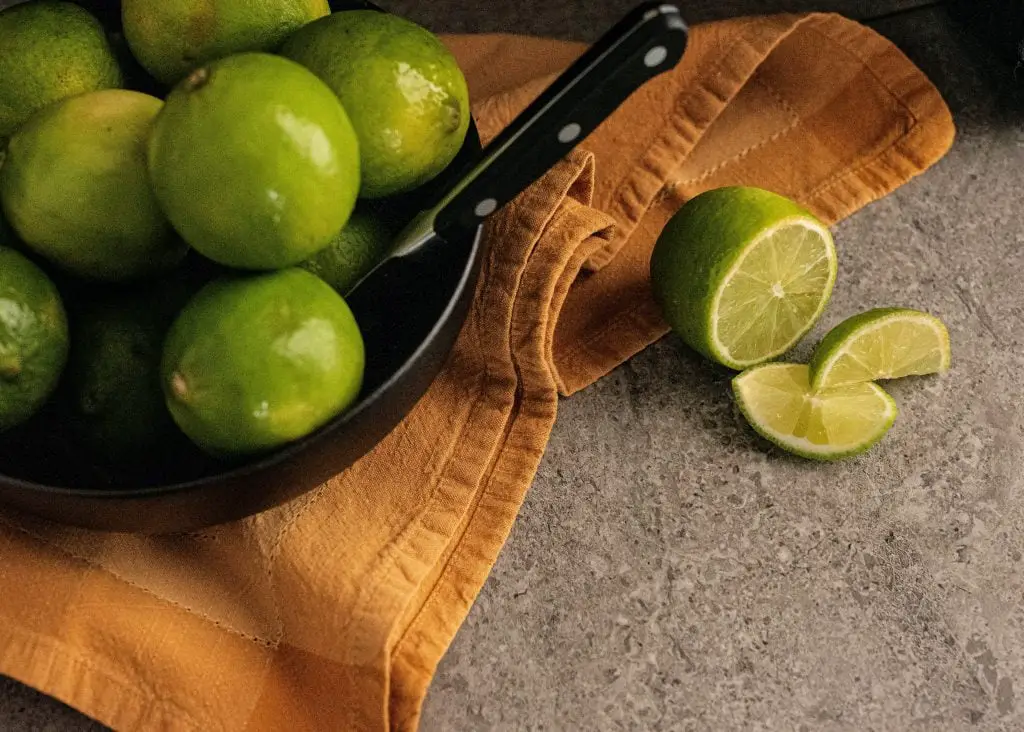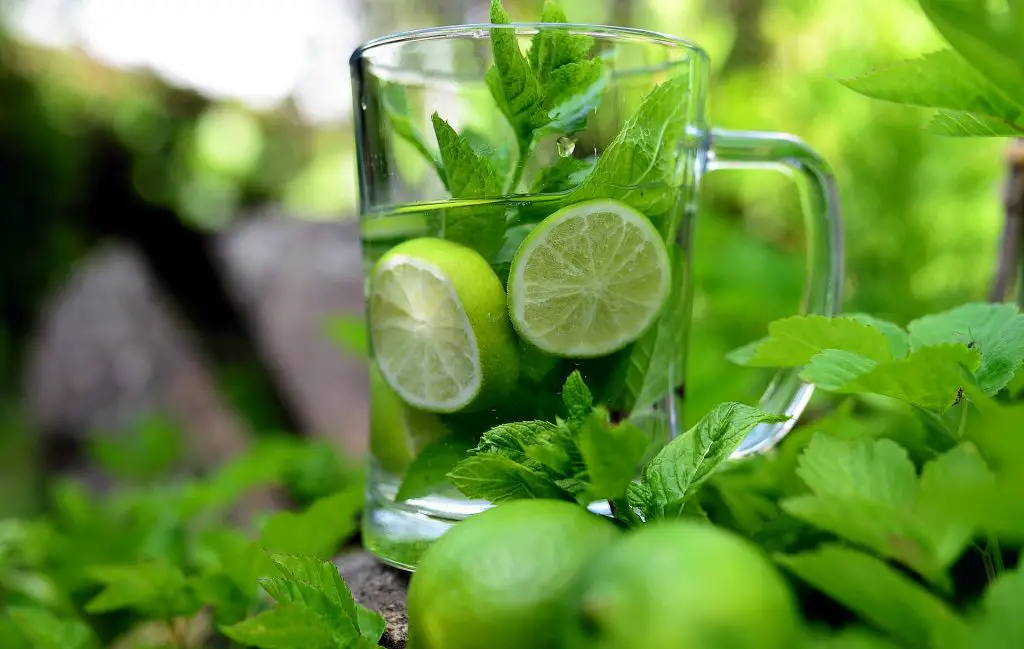What Time Of The Year Do Limes Fruit? For anyone that loves to have that zesty Lime flavor in their drinks or cooking growing a Lime tree in the back yard is an absolute must. However, the obvious question is can you get the fruit year-round, or are the fruits only available a few months of the year?
When a Lime tree fruits is dependent on the type variety of Lime that is planted. Tahitian Limes, which are the most popular type of Lime, fruit year-round however around 70% of the crop matures from mid-Spring to mid-Autumn. Mexican Limes also produce year-round with the key cropping period occurring in Spring and Finger limes produce fruit in Autumn.
If you are considering putting a Lime tree into your garden the variety I would select to grow is a Tahitian Lime. The reason for this is that Tahitian Lime Trees produce the most fruit of any variety, click here for details, it fruits year-round and the fruit is juicy with a moderately thick skin which makes the fruit suitable for juicing and using the zest of the rind. Additionally, the tree is largely thornless which makes it easy to manage.
What Climates Can A Lime Tree Grow In
Most varieties of Lime are suitable for growing in Zones 9 to 11 outdoors. If you live in zone 8 it is possible to grow a citrus tree however it is best to grow it in a pot as this will allow the tree to be brought indoors when it is cold. In terms of hardiness, Tahitian Limes and Finger Limes are generally more tolerant of colder conditions than the Mexican or Key lime.

How To Grow Lime Trees
Lime trees are generally an easy tree to grow if the weather conditions in your region are favorable and only light frosts occur during winter. The other major requirement for citrus trees is that the soils need to be relatively free draining as citrus trees do not like having wet feet as it can cause the roots to rot.
When planting a tree the most important consideration is location. Lime Trees require a sunny location with at least 8 hours of direct sunlight to produce a reasonable harvest. Additionally, it is preferred that a sheltered position be selected as windy conditions can cause the flowers to be damaged and it can also affect the degree of pollination that occurs in cases where the flowers remain intact.
Soil Conditions
In terms of soil conditions, Lime trees prefer moist but well-drained soil that has plenty of organic matter added. Ideally, the pH of the soil should be slightly acidic, a pH between 6.0 to 7.0 is generally preferred. The easiest way to test the pH of the soil is to use a pH meter. pH meters are generally a little more accurate than pH kits with indicator strips and they are also cheaper to buy. To see the latest prices on Amazon click here.
In cases where the pH of the soil is outside the desired range, it can be adjusted by the addition of lime to increase pH or sulfur to lower it. When making adjustments to the pH of the soil with chemicals it is important to dig them into the soil thoroughly. In the case of sulfur, the effect on pH may take some months to appear.
In addition, to adjusting the pH of the soil it may also be necessary to improve the drainage of the soil if you live in a region with heavy soils that contain a lot of clay. If you are unsure if you have heavy soil there is a simple test you can do to determine this.

Dig up a soil sample and moisten it with water. Take a handful of the soil in the palm of your hand and roll it into a firm sausage shape. Once the sausage shape is formed try to bend it into a circle. If it is possible to make a circle without the soil cracking it is clay soil. If the soil falls apart easily and will not hold any shape it is sandy soil. And if the soil holds together but can’t be bent without cracking, you have loam soil which is ideal.
If you have clay soil it is advisable to incorporate gypsum into the soil as it will help break up the clay. Additionally, it is advisable to large amounts of compost and horticultural grit as that will also serve to reduce its water holding capacity. For sandy soil adding large amounts of compost is also advisable to increase the level of nutrients present in the soil.
However, it is important to note that if you need to modify the soil significantly it is advisable to also modify the surrounding area otherwise the tree will continue to be affected by the soil conditions as the root system expands underground.
It is recommended that is approximately 3ft (90 cm) around the bases of the plant should be modified. Additionally, in cases where the soil is too wet, the plant can also benefit from the plant being elevated as this will improve drainage around the root-ball of the tree. This will require soil to be mounded up around the base of the plant
How To Plant Lime Trees
The best time to plant a Lime tree is in Spring once any chance of a severe frost has passed. This part of the year is ideal because it provides time for the tree to adjust to its new surroundings and for the root system to become established in mild conditions. This will allow the tree to cope better with the hotter conditions of summer.
When planting the tree start by creating a hole that is around twice the width and depth of the container the tree arrived in. Remove the tree from its pot and lightly tease out the roots outward with your fingers as this will help the roots to penetrate the surrounding soil more quickly.
Position the rootball at the same depth it was in the container originally and then backfill the hole with soil. To avoid any chance of there being air pockets around the roots firm the soil in with your heel.

Caring For Lime Trees
When the planting process is complete create a small well around the base of the trunk and fill it several times with water to ensure it is watered in well. Then cover the surrounding area with a thick layer of mulch, around 4 inches (10 cm) is ideal, as this will help to ensure that the tree remains moist. To avoid any chance of collar rot ensure that the mulch does not come into contact with the trunk of the tree.
During the trees’ first season, particularly on hot days, it will be necessary to ensure that the soil remains moist by regularly watering. A deep watering once a week is usually sufficient unless the weather is extremely hot.
As Lime trees require a lot of nutrients to fruit well it is best to apply fertilizer every 2 to 3 months in the growing season. For this, I have found that chicken manure pellets are suitable for this purpose. When applying the pellets they should be spread evenly around the drip zone of the tree.
As the tree increases in size, it will be necessary to prune the tree to maintain its shape and removed any dead or diseased branches. Generally, this only needs to be done once a year and should be done after the tree has flowered to avoid any chance of affecting the size of next year’s crop.

Harvesting Fruit
When selecting the fruit from the tree it is best to wait until the fruit is beginning to change colour. Even though most people think of Limes as being green they will actually change to a yellow colour. At this stage they become sweeter than those in the green form.
When picking the fruit from the tree care should be taken to avoid damaging the branches and the fruit by twisting the fruit rather than pulling on it. Once the limes have been picked they will last in the fridge for several weeks provided that the fruit is not damaged or bruised.
